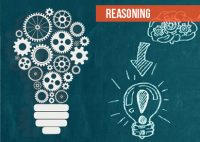Alpha Numeric For SBI PO Set – 21

Alpha Numeric For SBI PO Set – 13
1) Study the following arrangement carefully and answer the questions given below.
N C 4 A 3 7 © S V € Q E 8 2 @ Z 9 ∑ F W U M 1 5 I & + $ K L Y
Four of the following five are alike in a certain way based on their positions in the above arrangement and so form a group. Which is the one that does not belong to that group?
a) CA©
b) @I ∑
c) &$Y
d) S€8
e) None of these
2) Study the following arrangement carefully and answer the questions given below.
N C 4 A 3 7 © S V € Q E 8 2 @ Z 9 ∑ F W U M 1 5 I & + $ K L Y
Which of the following is the second to the left of the tenth from the right end of the above arrangement?
a) W
b) F
c) U
d) M
e) None of these
3) Study the following arrangement carefully and answer the questions given below.
N C 4 A 3 7 © S V € Q E 8 2 @ Z 9 ∑ F W U M 1 5 I & + $ K L Y
If all the symbols and letters from the above arrangement are dropped, which of the following will be the sixth from the right end of the above arrangement?
a) 9
b) 8
c) 4
d) 7
e) 3
4) These questions are based on the following arrangement:
J Y 2 = S £ ξ E G M ¤ 7 $ H P 9 K L β @ W Q 1 3 # C D ©
Four of the following five are alike in a certain way based on the positions of the elements in the above arrangement and hence form a group. Which one does not belong to the group?
a) 2 Y C D
b) £ S 1 3
c) J S © 3
d) £ E 1 W
e) = # 2 C
5) Study the following arrangement carefully and answer the questions given below.
F @ 5 3 R $ J P E 1 H % I Q 4 B 8 A W 2 U G 6 9 Z N M © V*
How many such numbers are there in the above arrangement, each of which is immediately preceded by a consonant and not immediately followed by a consonant?
a) None
b) One
c) Two
d) Three
e) More than three
6) Study the following arrangement carefully and answer the questions given below.
N C 4 A 3 7 © S V € Q E 8 2 @ Z 9 ∑ F W U M 1 5 I & + $ K L Y
How many such consonants are there in the above arrangement, each of which is immediately preceded by a letter and immediately followed by a vowel?
a) None
b) One
c) Two
d) Three
e) More than three
7) Study the following arrangement carefully and answer the questions given below.
N C 4 A 3 7 © S V € Q E 8 2 @ Z 9 ∑ F W U M 1 5 I & + $ K L Y
How many such numbers are there in the above arrangement, each of which is immediately preceded by a number and not immediately followed by a letter?
a) None
b) One
c) Two
d) Three
e) More than three
8) These questions are based on the following arrangement:
J Y 2 = S £ ξ E G M ¤ 7 $ H P 9 K L β @ W Q 1 3 # C D ©
How many such symbols are there in the above arrangement each of which is either immediately followed by a number or immediately preceded by a letter, but not both?
a) Nil
b) One
c) Two
d) Three
e) None of these
9) These questions are based on the following arrangement:
J Y 2 = S £ ξ E G M ¤ 7 $ H P 9 K L β @ W Q 1 3 # C D ©
How many such letters are there in the above arrangement each of which is either immediately followed by a number or immediately preceded by a symbol, but not both?
a) Four
b) Five
c) Six
d) Seven
e) None of these
10) These questions are based on the following arrangement:
J Y 2 = S £ ξ E G M ¤ 7 $ H P 9 K L β @ W Q 1 3 # C D ©
How many such numbers are there each of which is either immediately followed by a symbol or immediately preceded by a letter, but not both?
a) Two
b) Three
c) Four
d) Five
e) None of these


